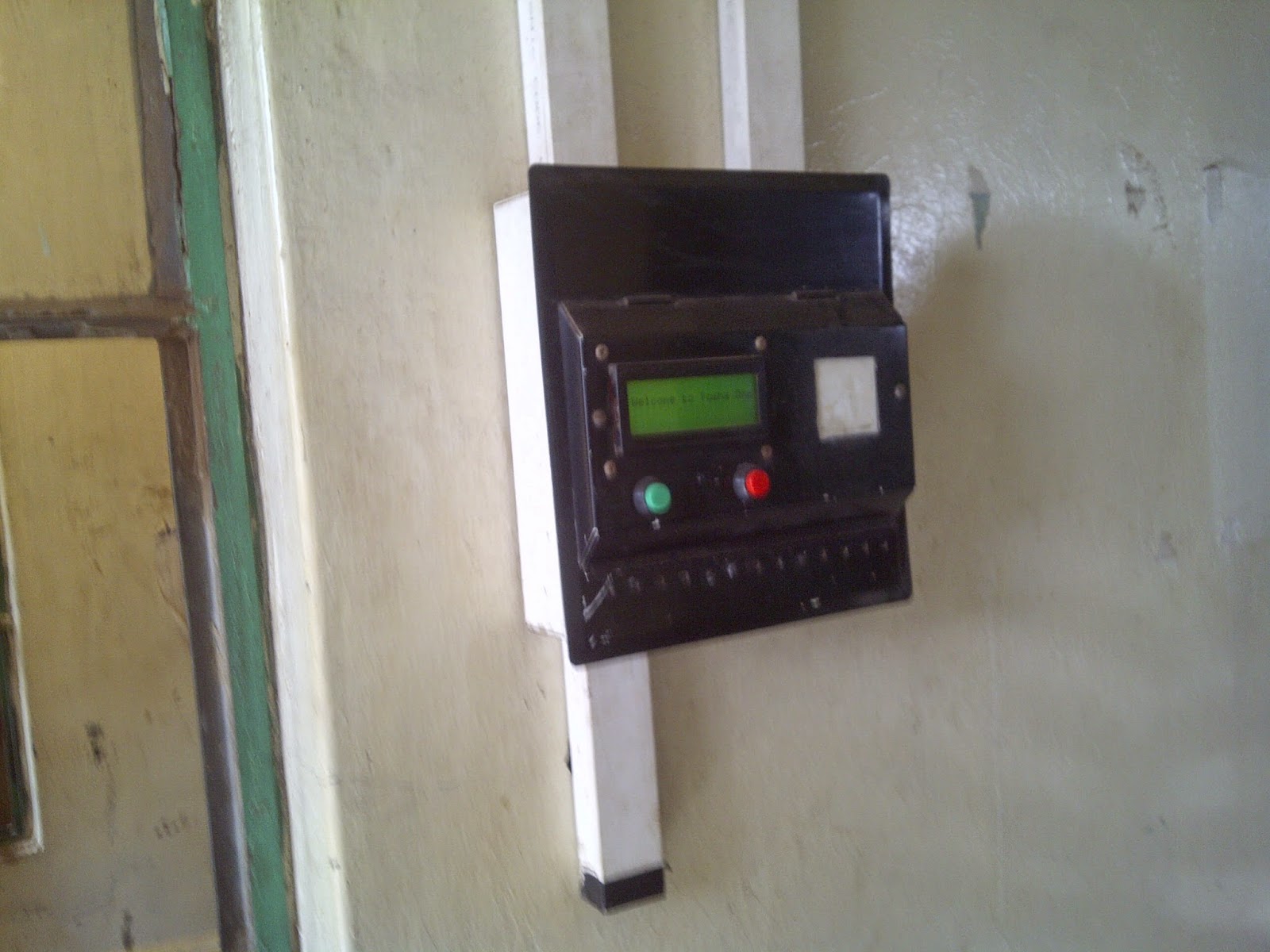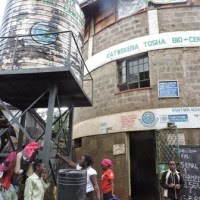Improving Access: A Case Study on the Bio-Card System at Tosha One
Impact of the New Bio-Card Payment System
Beginning in early 2013, a team of computer science students
from Jomo Kenyatta University started developing a closed-loop cashless payment
system for Umande’s bio-centres. This payment system is presently being trialed
at the Tosha One bio-centre. Currently close to 1,000 people per day use the
bio-centre at Tosha One, making the location ideal for testing the initial
stages of this new payment system.
So how does it work? Currently there are two cashless
payment platforms being used at the Tosha One bio-centre: the Kopo Kopo system
and the new closed-loop bio-card process. Implemented at the Tosh One
bio-centre since January 2013, the Kopo Kopo system allows customers to pay for
bio-centre amenities using their bio-cards. Patrons simply use Safaricom’s
M-PESA service “lipa na m-pesa” to top-up credit on their card, which can be
charged for daily, weekly, or monthly services. With M-PESA, the transactions
are electronically recorded, immediate, and charge-free. Umande is instead
charged 1% lumpsum each time there is a transaction from the till number to the
group bank accounts monthly.
Kopo Kopo also offers the ability for caretakers to
electronically submit, transfer, and record cash transactions with its mobile
app. Because the caretaker is ultimately responsible for significantly less
records, both the mobile and cash payment methods improve the accountability
and record keeping of the bio-centre. With that being said, the Kopo Kopo
method has its challenges. For one, caretakers are still responsible for
submitting the physical cash for Kopo Kopo transactions, as the front-end money
management is still not fully cashless.
With these issues in mind, the innovators developed a
separate computer platform to make electronic transactions using bio-cards.
Customers can add credit to the bio-cards either through cash transfer at
Umande, online, or through Kopo Kopo, and then simply use the system at the bio-centre.
By selecting either toilet or shower and holding the bio-card up to the
computer, patrons can immediately pay for bio-centre services. Because the
system is closed-loop and instant, the payment method allows for improved
record-keeping and accountability. The bio-card system also offers a convenient
way to pay for families and other sharing clients without mobile phones.
When asked about the Kopo Kopo and new bio-card system,
Tosha One’s caretaker Winnie Abuto responded positively. Abuto said that while
the Kopo Kopo system initially ensured the safety of money, “the bio-cards are
better.” The Tosha One bio-centre provides toilets for 5 shillings, cold
showers for 10, and both for 200 shillings a month; there are currently 20
monthly clients. “More people are using the bio-cards,” comments Winnie, who is
no longer responsible for the difficult and time-consuming recordkeeping of
numerous cash transactions.
Although this new system does have many advantages, it still
presents some issues; fortunately, Umande’s innovators are currently working to
solve them. Because the system runs on electricity, frequent power-outages are
a main problem. To mediate this issue, the creators are working on creating a
rechargeable computer system, so there is backup power supply during outages.
While not as serious of a problem, some customers have also been misplacing and
losing their bio-cards. To further address the issue of traffic recording, the
inventors have developed a sensor system to record Tosha One’s traffic. Though
still in its initial stages, these sensors would effectively record how many
people use the bio-centre in one day.
Despite the issues associated with the cashless payment
systems, more community members are using the toilets and the biogas is being
used. The Tosha One bio-centre is also serving the community, providing a space
for both football game viewings and community cooking. A neighboring school
cooks meals in Tosha One’s upstairs kitchen using the bio-centres gas. Prior to
using the inexpensive and sustainable biogas stoves, the school would use
harmful charcoal to prepare children’s meals. But since the implementation of
the Tosha One bio-centre, water and sanitation has been improved for families,
children, and community members. And thanks to innovations like the bio-card
system, this improved access is expanding.
Written by Sarah Snead





Comments
Post a Comment